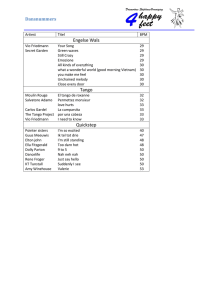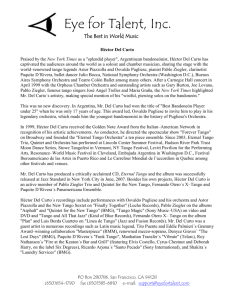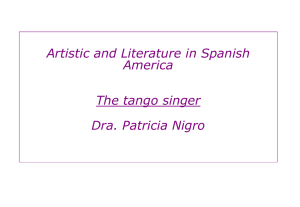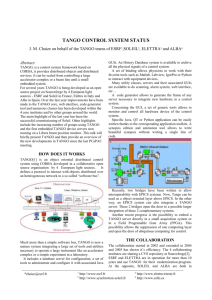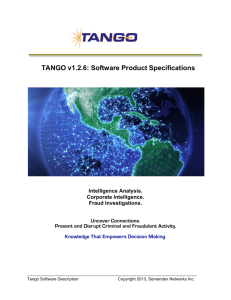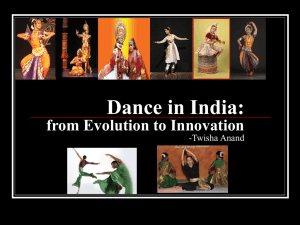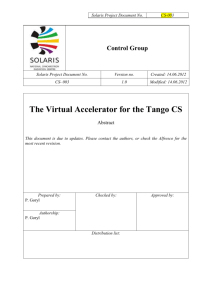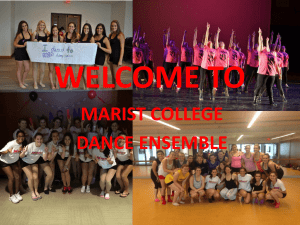tanga
advertisement
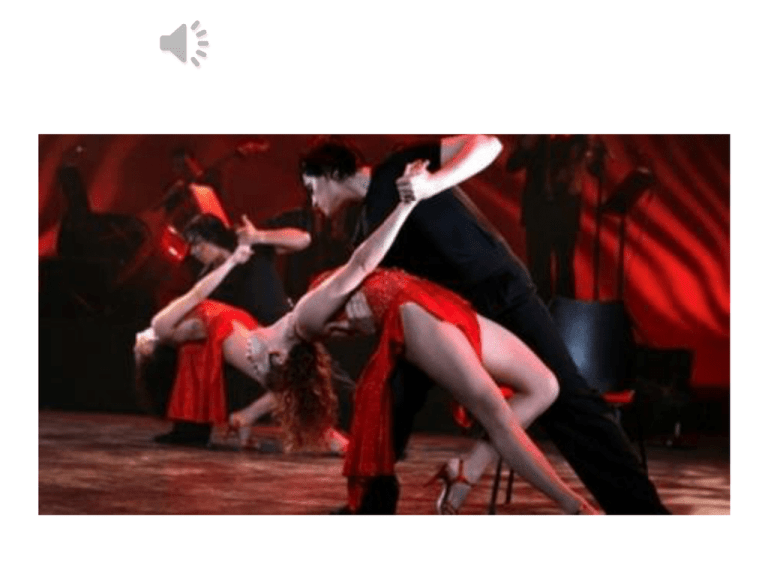
Timeline of the Tango By: Taloria Stiffin The Word on Tango • African words – – – – – meaning closed space or reserved space (unknown word) tanga: festival or “end of mourning” ceremony tanga dungulu: to walk or show off tangala: walk heavily or stagger tang: to touch, to feel or get close to • Latin root: tangere, meaning to touch In Connection to the Author: Jorge Luis Borges Borges has a very influential, maybe even controversial theory of the origin of the dance- he believes that it originated as an individual dance in brothels. He is so committed to his theory, he wrote many essays and articles on the theory such as “The History of Tango” and “El Tango.” It is believed that his unwavering faith in his own theory is why it is still believed today. The Birth of the Tango • In 1800’s, African slaves in Buenos Aires, Argentina were allowed to dance a dance know “candombe” – In 1853, when slavery was abolished, the dance stayed popular and evolved into the “milonga” and eventually the famous forbidden dance: The Tango • The “habanera” was also brought to Buenos Aires by the same African slaves, also influencing the dance’s style – From the “contradaza” and later fused with the “polka Under the Influence of Tango • Majorly influenced by the following groups of people: – Gauchos (contributed music) • *Later became Compadres or Compadritos – – – – Creoles (Carlos Gardel’s composition of tango “creole rural music”) Gringos (danced) Brothels (myth of origin) Criminals (dance of the poor, often criminals) The Milonga Milonga: a place where partners could dance close to one another and would not be discouraged. • Often discouraged by higher social classes, for only dances where partners were not in contact were socially accepted • Milonga was the tango before tango was tango • Also a dance (combines many popular South American dances) • In African, milonga means “words” The Moved that Changed Tango Before the 1890’s, both partners would dance together, as one and synchronized. Then, the Ocho was born, changing tango forever! The male stands still, while the female dances around him, as we still see today. 1897-1910 • The Creole Tango got its claim to fame during this time period, and is know for its limitation of movement to simple steps, turns and ochos. Though, it still has an impact on tango. And…Many More Tangos Many More • Tango Arrabalero- Was a bit chaotic, therefore eventually banned. • Canyengue- Danced on the dirt by the poor • Tango Liso- The simplest, most popularized. • Tango de Salon- Mainstream The Tangoer Speaks September 22nd, 1913, a man going by the name meaning “old tangoer” wrote an article, saying in 1877, African Argentines created the tango. This is the first document mentioning the “birth” of the tango. And Then They Came Along • Italians – Musical influenced • Jews – Violins, Piano, lyrics, arranged et cetara • Spaniards – FLAMENCO • French – Made the dance popular Carlos Gardel Carlos Gardel (1887/1890-1935 is considered the most distinguished figure of tango, because of his “beautiful baritone” voice. He is often called the King of Tango. Began his career in the 1910’s as a Buenos Aires local bar singer, Gardel exploded into a worldwide phenomenon. His repertoire was creole rural music (cielito, estilo, triunfo, cifra, milonga, zamba, vals), which were loved all over Argentina. Argentina No Likey Even though the dance was very popular with the middle and lower classes, it was greatly discouraged by those belonging to the middle class. They believed that the dance was very scandalous, since it involved such close and intimate physical contact. Hence, the dance has been nicknamed as “The Forbidden Dance. In Connection To the Text: “Man on Pink Corner” Thanks for watching!
